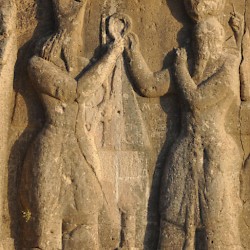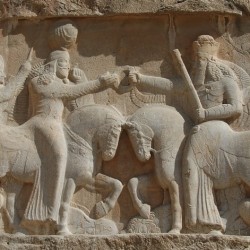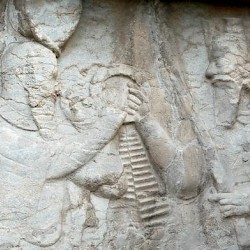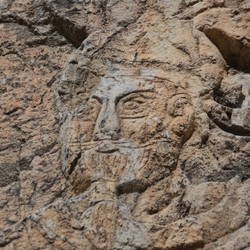This page is a stub. It will be expanded to a full-fledged article.
Ardašir I
Ardašir I: first king of Persia from the Sasanian dynasty, ruling from 224 to 241.

Main deeds:
- Name: Ardašir I
- Son of a Zoroastrian high priest from Istakhr, immediately north of Persepolis, where the ancient cults of the Achaemenid Empire were continued.
- 222: Ardašir defeats Abinergaos III of Characene
- Beginning of reign: seized power in 224. Ardašir revolts against his Parthian overlord Artabanus IV, and develops a new royal ideology. He more or less admits that he has been a rebel and has betrayed his master but, he claims, he had done so because the supreme god Ahuramazda (or Hormuzd, as he was often called in this age) had wanted him to do so.
- 226: Captire of Ctesiphon
- Ardašir confers many privileges on the Magians, who gain great political power. For example, they play a role in the inauguration ceremony in Ctesiphon and served as judges and tax collectors.
- War against Rome. Nisibis is the natural target. The siege in 230, which is unsuccessful, is the cause of a long war between the Sasanian Persians and the Romans. The young emperor Severus Alexander goes east and attempts negotiations first, but when they fail, he invades Iraq, where some inconclusive fighting take place in 233. A peace treaty may have been signed, which leaves everything as it had been: Nisibis Roman, and the Sasanians without access to western Armenia. It is essentially a Sasanian defeat, because this handicaps them in their struggle against the remaining members of the Arsacid dynasty, who maintain themselves in Armenia.
- End of reign: natural death in 241
- Succeeded by: Shapur I
Buildings:
Rock Reliefs
(Numbers according to the Vanden Berghe list.)
- Equestrian victory Firuzabad (defeat of Artabanus IV)
- Investiture Firuzabad
- Investiture Naqš-e Rajab
- Investiture relief Naqš-e Rustam (defeat of Artabanus IV)
- Victory relief Salmas
 Firuzabad, Relief 2, Investiture |
 Naqš-e Rustam, Investiture relief of Ardašir I |
 Naqš-e Rajab, Investiture relief of Ardašir I, king and Ahuramazda |
 Salmas, Rock relief, Ardašir I, Portrait |
General Literature on Sasanian Persia
- Touraj Daryaee, Sasanian Persia. The Rise and Fall of an Empire (2009)
- Josef Wiesehöfer, Das antike Persien. Von 550 v. Chr. bis 650 n. Chr. (1994)